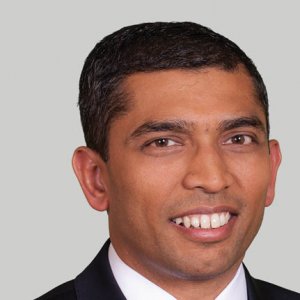Opportunities to Enhance Drilling Performance

Opportunities to Enhance Drilling Performance

STORY INLINE POST
Q: Can PEMEX’s deepwater exploration results be considered as successful as they have been presented?
RS: We must note the difference between exploration success and drilling execution success. Exploration has been quite successful as far as the number of discoveries is concerned.
BM: Mexico’s deepwater exploration success rate is quite good, but PEMEX is the only operator on the Mexican side of the Gulf and has exclusive access to all the best prospects. It does not have to compete with other companies. It is important to put the results in that context.
Q: What have been the main challenges facing PEMEX’s drilling activities since APS joined in?
BM: When we began advising PEMEX, their deepwater rigs were able to drill and test one or two wells per rig in a year. In the northern part of the Gulf of Mexico, that same rig could cover four or five wells. Part of that difference is due to the fact that PEMEX insisted on flow testing every well, while little to no flow testing is done on wells on the US side of the Gulf. The formations were evaluated on the basis of core analysis, electric log analysis, wireline fluid samples, and MDTs (Modular Formations Dynamics Tester). We did not do any well flow testing.
RS: One of the reasons why PEMEX had that model in the first place is because it has been constrained with high tax rates to the point where it has not been able to accumulate capital for use in field developments. As a result of this, it has gone to the international financial community and pledged its reserves as collateral for loans. It is much easier for the banks to provide loans when well flow testing is involved. In fact, some financial institutions might require well flow testing.
BM: On the other hand, the company also suffers significant delays in getting equipment to the rigs, something that would be unacceptable for other companies. This happened regularly because of PEMEX’s structure, which divides responsibilities among many different and non-connected departments, with a direct repercussion on the drilling efficiency. Its penetration rates are as good as anyone else’s, but the flat spots are what most affect the operations. Therefore, the main areas of improvement do not really lie in technology and well plan design, but in contracting, logistics, and the actual execution of the well plans. This is where we see significant room for improvement.
Q: What is the role of your drilling advisors once the planning is done?
BM: The way that PEMEX is organized is a bit unusual for international companies. At PEMEX, deepwater drilling engineers are all part of the VCDSE teams, but they report back to the exploration organization. The drilling operation’s personnel report to a different organization, and both sides report to a sub-director, such as the Exploration Sub-Director or the Drilling Sub-Director. Theoretically, exploration and drilling teams need to work closely to ensure well-functioning operations. Most international organizations, even if they have a separate drilling organization, will put all of their drilling operations under the local Asset managers. These Asset managers will each have a drilling manager who, in turn, will have an operations manager, a drilling superintendent, a drilling engineering supervisor and his staff, a logistics manager, and others all reporting back to him or her. This drilling manager will then report back to the Asset manager so that everything works as one single unit. PEMEX is organized very differently, as those two lines do not come together until they get to the Director General. This creates some significant problems. We have been successful on the rigs as advisors with two main functions. On one hand, our people help PEMEX supervisors on the rig with international best practices that our teams bring from the international scene. On the other hand, we provide onshore advisors with detailed knowledge of events on the rigs, so that we can begin to understand the areas in which we can help PEMEX improve. We also have another advisor in Ciudad del Carmen who works with PEMEX’s drilling operations team to help bridge that gap and bring our international expertise there as well.
Q: To what extent must PEMEX change its organizational processes to become a productive enterprise of the state?
RS: My simplified view of what the problem is at PEMEX is that it lacks a bottom line focus. There does not appear to be a real concern for cost and cost-management, and this goes back all the way to the government’s control. Both the company’s yearly budget and its tax rate are decided by the Treasury, without any consideration for whether it will have enough money to maintain infrastructure and replace critical equipment in refineries, gas plants, and more. By doing this, the government takes away responsibilities from senior management at PEMEX, as executives are not accountable when somebody outside the company sets its budget and dictates its tax rate. If PEMEX is going to be held accountable for becoming competitive against other companies in the market, the tax issue must be looked at carefully. Most importantly, PEMEX managers need to be given the autonomy to manage the company.
BM: From the drilling operations side, PEMEX will have to fundamentally change its way of doing business or it will not be able to compete. The renowned American businessman, Peter Drucker, once remarked that “culture eats strategy for breakfast.” Accordingly, what PEMEX has to do is undergo a significant change in its culture, which is incredibly hard to do in large organizations and takes a long time. The only way such a cultural change can take place in a reasonable timeframe is by bringing in external experts with appropriate management skills at different levels of the company to act as a catalyst for change.
Q: How will the centralization of procurement affect the company’s drilling activities?
BM: When you divorce the procurement of suppliers and contractors from the managers who are responsible for accomplishing the work, then you take all of the responsibility for the performance of that supplier or that contractor out of the hands of that manager. The problem comes when you do not know what good performance looks like, because you are not in operations but in purchasing. I have seen this several times. Managers should be responsible for the contractors, by helping to hire them and making sure they perform well. If the manager is not a part of that process, the arrangements are not going to work out. None of that is mentioned at all in the procurement plan, as procurement staff do not often consider possible effects on operations. All major companies have centralized procurement functions but their decisions are heavily influenced by the operating staff, particularly concerning drilling and completion services. The commodity services can be chosen by anybody, but the elements that involve technical and operational merits and contents are always chosen by the operational groups, and the purchasing division utilizes their processes to acquire them at the best price.
RS: Part of the issue is that logistics does not necessarily have an appreciation for the bottom line. Their priority is to get all of the vessels out to sea and all of the equipment or supplies to the rigs. If they have a vessel that is not quite full yet, they may easily decide to wait until enough cargo comes along, because one of their objectives is to sail with full loads. If you have four shallow water drill rigs that run at an approximate day rate of US$175,000, that need certain equipment, and you keep them waiting, you could be losing up to US$700,000 a day. However, a single deepwater rig has a spread cost of US$1 million per day, so holding a vessel until it is fully loaded might end up costing a significant amount of money for PEMEX, even though the logistics division is fulfilling its objectives to the best of its ability. This is a problem that we have seen in many organizations and it brings us back to the importance of having a bottom line focus and good cross-communication between divisions.
Q: What should be the main priorities regarding the benchmarking of PEMEX’s drilling performance against international standards?
RS: There are two drilling performance benchmarking services that are widely known at a global level, both of which are heavily represented in the US Gulf of Mexico. We suggested early on that PEMEX really ought to take on these services and start benchmarking. It chose not to, mainly due to reasons of confidentiality. In order to start this benchmarking process, the company has to provide all the information available on all of its wells, but PEMEX could not do that.
BM: The positive thing is that PEMEX will soon have examples in its own country, under the same regulatory regime, of what optimal performance actually looks like.
Q: What would you recommend to improve PEMEX’s future upstream operations?
RS: When we started working with PEMEX, we did not really know what to expect. We had been told that the company’s performance needed to improve. It has very smart engineers, the best simulators, and the best communications equipment that money can buy. PEMEX really does not lack technology, yet that word keeps getting thrown around as being the answer to all of the company’s problems. The answer to these problems is actually management, a bottom line mentality, and experience. PEMEX engineers have traveled around the world, they have talked to all of the major operators, they have seen all of the systems that other operators use, and they have adopted what they consider to be the best of those systems. They have tried to put them into practice, but the issue is basically experience. PEMEX has not exercised these systems and its staff is not yet comfortable with them.






















